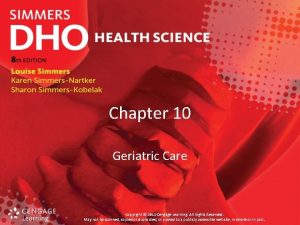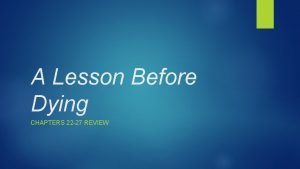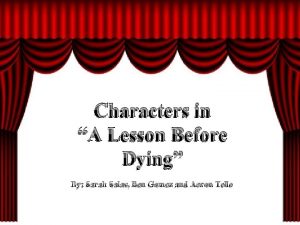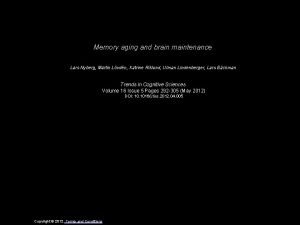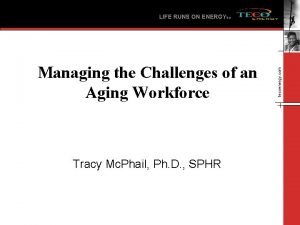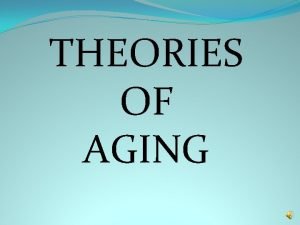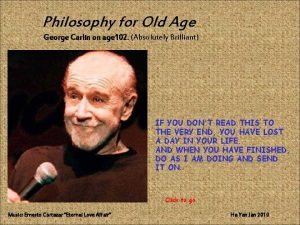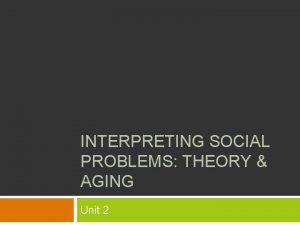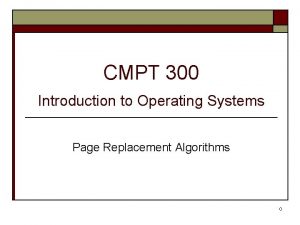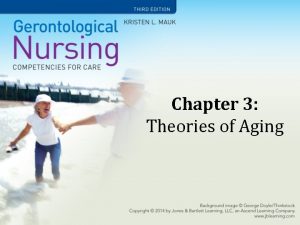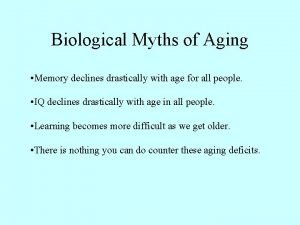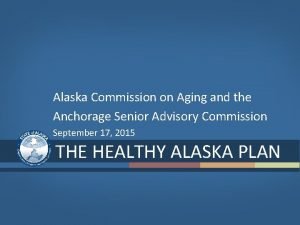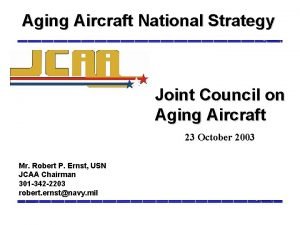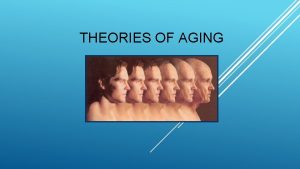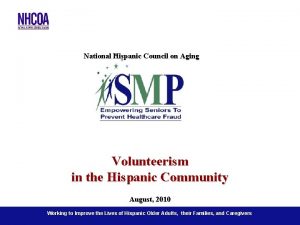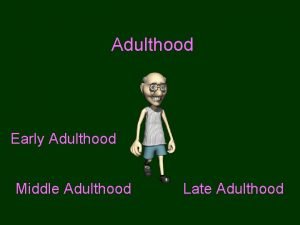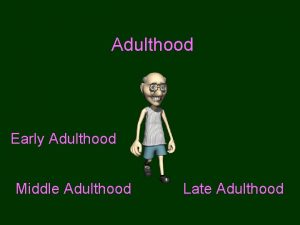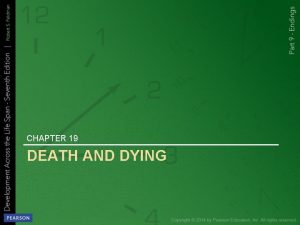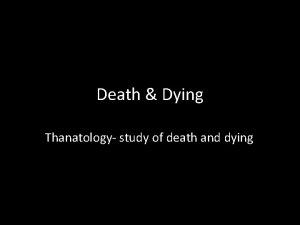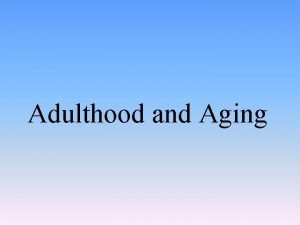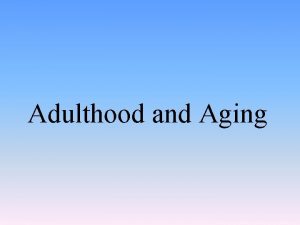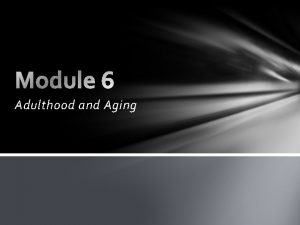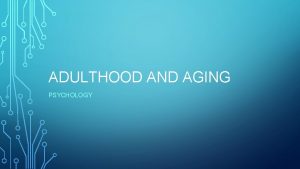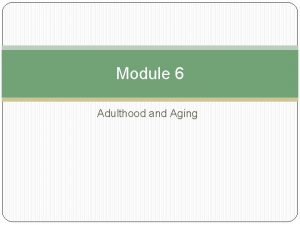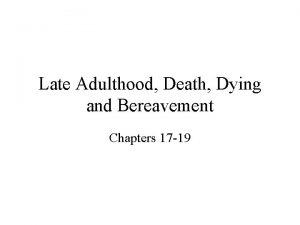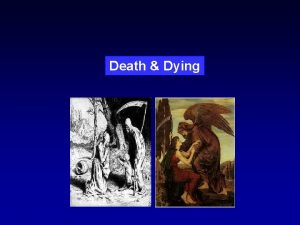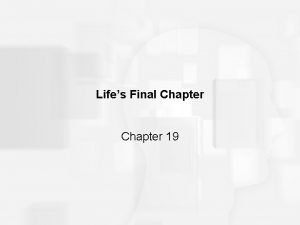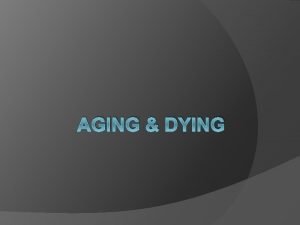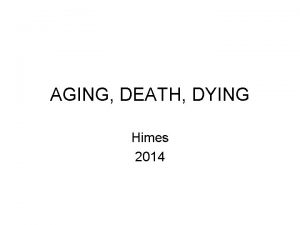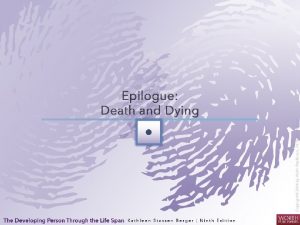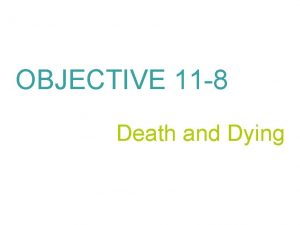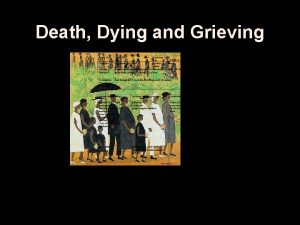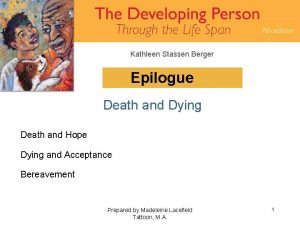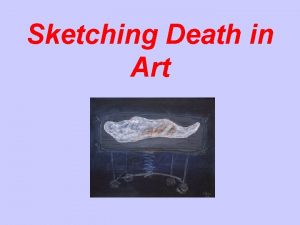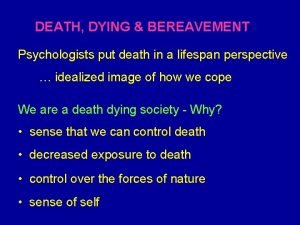Adulthood and Aging Chapter 13 Dying Death and





























- Slides: 29

Adulthood and Aging Chapter 13 Dying, Death, and Bereavement Adulthood and Aging Marion G. Mason Copyright © 2011 by Pearson Education, Inc. All rights reserved.

Death Anxiety • Involves fears of death-related factors: § § § Dying process Moment of death Situation of our body Spirit after death Unknown beyond this life Fear of obliteration • Fear of death peaks in young adulthood Adulthood and Aging Marion G. Mason Copyright © 2011 by Pearson Education, Inc. All rights reserved.

Death Anxiety (cont'd) • Declines in middle age and late adulthood • Older adults closer to death do not report anxiety; report anxiety of prolonged dying process Adulthood and Aging Marion G. Mason Copyright © 2011 by Pearson Education, Inc. All rights reserved.

End-of-life Decisions Adulthood and Aging Marion G. Mason Copyright © 2011 by Pearson Education, Inc. All rights reserved.

Advance Directives • Advance Directives: legal documents detailing (wishes of) end-of-life concerns § Allows patients to survive through emergency life-support technology Adulthood and Aging Marion G. Mason Copyright © 2011 by Pearson Education, Inc. All rights reserved.

Advance Directives (cont'd) • Patient Self-Determination Act, 1960, empowers patients: § § Patients can direct own health care Accept/refuse treatment Prepare advance directive documents Psychiatric advance directives for mental health treatments Adulthood and Aging Marion G. Mason Copyright © 2011 by Pearson Education, Inc. All rights reserved.

Advance Directives (cont'd) • Living will: a self directive with instructions to sustain/prolong life § After preparing, revisit the document • Health care proxy: appoint designated individual to make important decisions • Document called durable power of attorney of health care • Another procedure: durable power of attorney for finances Adulthood and Aging Marion G. Mason Copyright © 2011 by Pearson Education, Inc. All rights reserved.

Palliative Care and Hospice Programs • Palliative care treats symptoms and keeps individual comfortable • Can begin anytime after diagnosis • Hospice care: given in last few months of life § For terminally ill patients in last 6 months of life § Care takes place in patient’s home Adulthood and Aging Marion G. Mason Copyright © 2011 by Pearson Education, Inc. All rights reserved.

Palliative Care and Hospice Programs (cont'd) • Physiological concerns for patients in hospice care: § § § Pain management Shortness of breath Digestive problems Incontinence Skin breakdown Fatigue Adulthood and Aging Marion G. Mason Copyright © 2011 by Pearson Education, Inc. All rights reserved.

Palliative Care and Hospice Programs (cont'd) • Psychological concerns: § Depression § Anxiety § Confusion Adulthood and Aging Marion G. Mason Copyright © 2011 by Pearson Education, Inc. All rights reserved.

Euthanasia and Physician-Assisted Death • Dilemma: whether severely ill patients to continue futile life-sustaining procedures • Passive euthanasia: allowing “nature to take its course” • Active euthanasia: direct action of shortening patient’s life; is illegal Adulthood and Aging Marion G. Mason Copyright © 2011 by Pearson Education, Inc. All rights reserved.

Euthanasia and Physician-Assisted Death (cont'd) • Physician-assisted suicide: legal in the state of Oregon, and other parts of the world § Controversial to consider terminally ill capable of rational thinking § Physician-assisted suicide not unconstitutional § In Oregon Death With Dignity Act passed in 1997 § Such deaths account for 0. 01% Adulthood and Aging Marion G. Mason Copyright © 2011 by Pearson Education, Inc. All rights reserved.

Close to Death Adulthood and Aging Marion G. Mason Copyright © 2011 by Pearson Education, Inc. All rights reserved.

Psychological Changes (cont'd) • Five-stage model of dying patients proposed: § Stage 1: denial - Patient believes they are mis-diagnosed - They are curable § Stage 2: anger - Patient shows anger at God, loved ones, medical professionals, self Adulthood and Aging Marion G. Mason Copyright © 2011 by Pearson Education, Inc. All rights reserved.

Psychological Changes (cont'd) • Five-stage model of dying patients proposed: § Stage 3: bargaining - Postpone death; may pray § Stage 4: depression - Death seems reality § Stage 5: acceptance - Acknowledgment of one’s situation - Mental preparation Adulthood and Aging Marion G. Mason Copyright © 2011 by Pearson Education, Inc. All rights reserved.

Interacting with those Who are Dying • Dying person may be worried about being abandoned • Be present: § Physically, and psychologically § Talk when dying person wishes to; remain close and be respectful § Better to communicate about important matters Adulthood and Aging Marion G. Mason Copyright © 2011 by Pearson Education, Inc. All rights reserved.

Interacting with those Who are Dying (cont'd) • Be present: § Do not ignore/downplay the fact of dying § Talk about it § Be prepared to ask hard questions, using difficult (painful) words • Create an environment of comfort for the individual: place personal items around Adulthood and Aging Marion G. Mason Copyright © 2011 by Pearson Education, Inc. All rights reserved.

Physiological Changes • Bodily changes as death approaches: § § § § Drowsiness and confusion Lack of interest in food/water; reduced intake Loss of bladder and bowel control Limbs and skin cool Death rattle: breathe noisily Changes in heart rate Involuntary movements Seizure may occur Adulthood and Aging Marion G. Mason Copyright © 2011 by Pearson Education, Inc. All rights reserved.

Physiological Changes (cont'd) • Physically comfort dying person • Stay with body of bereaved, pray and grieve together Adulthood and Aging Marion G. Mason Copyright © 2011 by Pearson Education, Inc. All rights reserved.

Transitions Adulthood and Aging Marion G. Mason Copyright © 2011 by Pearson Education, Inc. All rights reserved.

Marking the End of Life • Marking of event of death influenced by: § Culture § Religious traditions § Personal and family preferences • Funeral/memorial service facilitates a closure Adulthood and Aging Marion G. Mason Copyright © 2011 by Pearson Education, Inc. All rights reserved.

You have the right… Adulthood and Aging Marion G. Mason Copyright © 2011 by Pearson Education, Inc. All rights reserved.

Marking the End of Life (cont'd) • Traditional funeral: § § Preparation of body Viewing/visitation Service at funeral home Burial, entombment, cremation • Direct burial: § No preparation or embalming § Simple container § Quick burial Adulthood and Aging Marion G. Mason Copyright © 2011 by Pearson Education, Inc. All rights reserved.

Marking the End of Life (cont'd) • Direct cremation • Federal Trade Commission (FTC) encourages adults to plan their funeral • Average funeral cost is $10, 000 Adulthood and Aging Marion G. Mason Copyright © 2011 by Pearson Education, Inc. All rights reserved.

Bereavement • Amount of time individuals spend to recover varies • No correct way to cope with grief • Adjustment influenced by § § § Age Personality The way loved one died Religious/cultural background Social support Adulthood and Aging Marion G. Mason Copyright © 2011 by Pearson Education, Inc. All rights reserved.

Bereavement (cont'd) • Bereavement: time between experience of loss and full adjustment to routine • Grief: emotional reaction to loss • Mourning: behaviors expected by one’s cultural and/or religious traditions Adulthood and Aging Marion G. Mason Copyright © 2011 by Pearson Education, Inc. All rights reserved.

Bereavement (cont'd) • Four phases of bereavement: § § Shock and numbness Separation anxiety Disorganization and despair New routines Adulthood and Aging Marion G. Mason Copyright © 2011 by Pearson Education, Inc. All rights reserved.

Complicated Grief • • Having difficulty adjusting to loss Experiencing long-lasting and intense grief Feelings of emptiness, bitterness Symptoms of grief may reduce after six months • May have difficulty in § Maintaining employment § Social relationships § Normal functioning Adulthood and Aging Marion G. Mason Copyright © 2011 by Pearson Education, Inc. All rights reserved.

Complicated Grief (cont'd) • Complicated grief seen in recent widows/widowers • Show signs of: § § Major depressive disorder PTSD Panic disorder Generalized anxiety • Helpful to join support group or seek psychotherapy Adulthood and Aging Marion G. Mason Copyright © 2011 by Pearson Education, Inc. All rights reserved.
 Chapter 23 dying death and hospice
Chapter 23 dying death and hospice Chapter 13 - death and dying
Chapter 13 - death and dying Taste imagery in the scarlet ibis
Taste imagery in the scarlet ibis Define forensic pathology
Define forensic pathology Chapter 10:1 myths on aging
Chapter 10:1 myths on aging A lesson before dying chapter 27 summary
A lesson before dying chapter 27 summary A lesson before dying main characters
A lesson before dying main characters Processed meat
Processed meat Jessie emily schofield structure
Jessie emily schofield structure Uky drc
Uky drc Dane county aging and disability resource center
Dane county aging and disability resource center Memory aging and brain maintenance
Memory aging and brain maintenance Managing the aging workforce challenges and solutions
Managing the aging workforce challenges and solutions Office of aging
Office of aging Oaas
Oaas Amanda martin enron
Amanda martin enron Human needs theory of aging
Human needs theory of aging Philosophy for old age
Philosophy for old age Problems with conflict theory
Problems with conflict theory Aging algorithm page replacement
Aging algorithm page replacement Non stochastic theory of aging
Non stochastic theory of aging Conclusion of aging
Conclusion of aging Dr berg how to look younger
Dr berg how to look younger Alaska commission on aging
Alaska commission on aging Subeom
Subeom Aging aircraft solutions
Aging aircraft solutions Age stratification
Age stratification National hispanic council on aging
National hispanic council on aging Theatre old age makeup chart
Theatre old age makeup chart Which aging empires suffered from the forces of nationalism
Which aging empires suffered from the forces of nationalism




